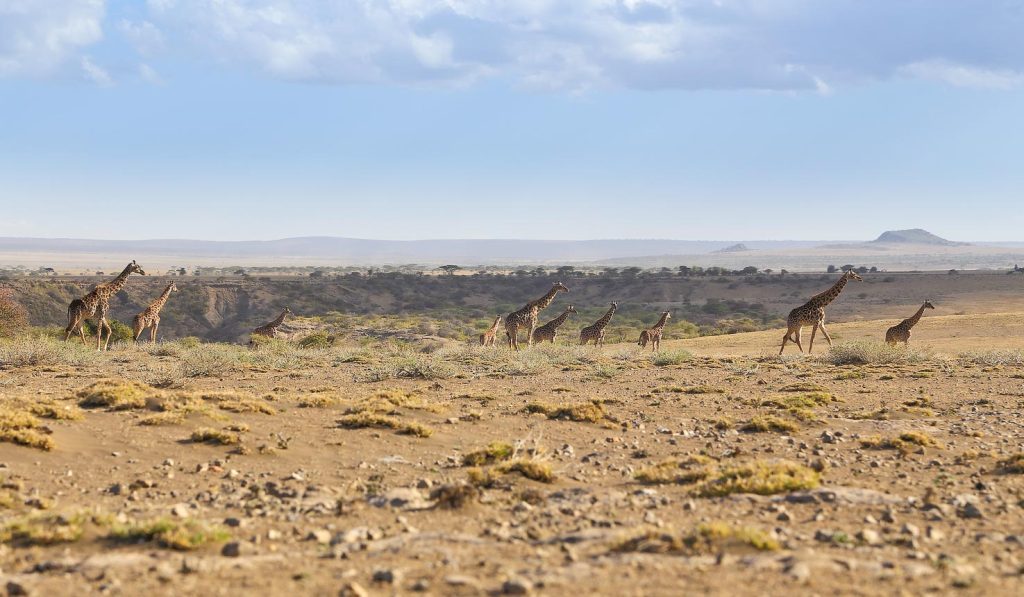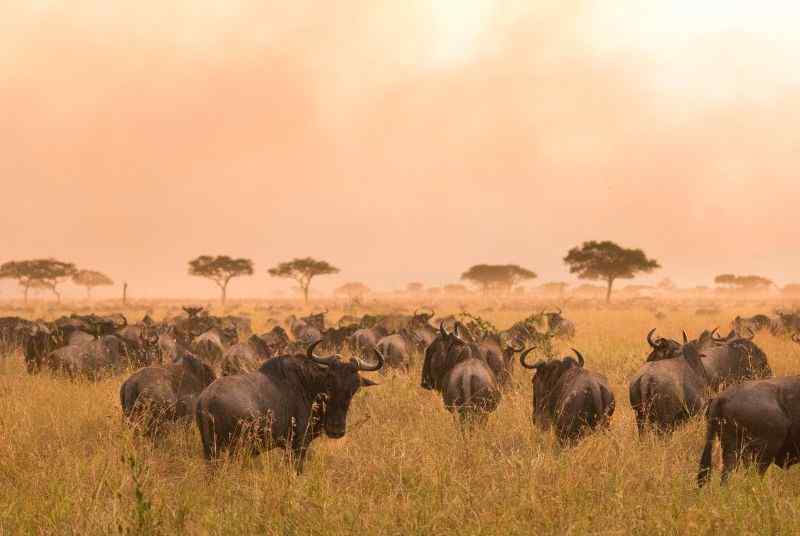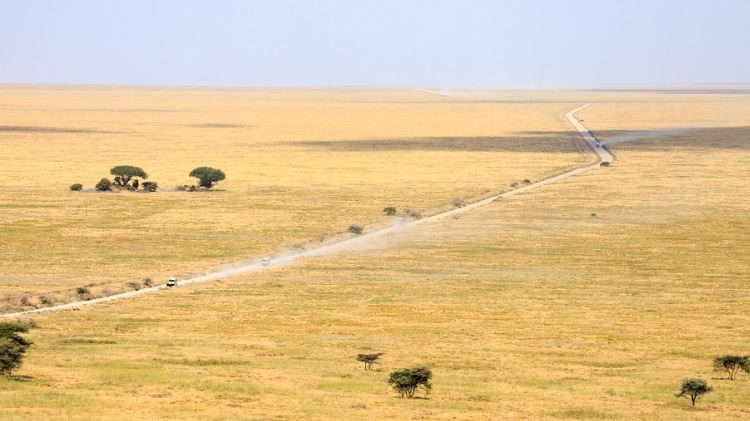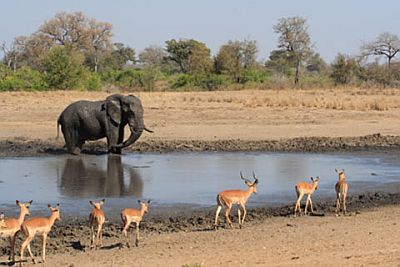The Serengeti Dry Season: A Safari Experience Like No Other




The Serengeti, a UNESCO World Heritage Site and home to one of the world’s most diverse ecosystems, undergoes a dramatic transformation during the dry season. This period, which typically spans June to October, offers one of the most rewarding times to embark on a safari. From wildlife sightings to unique landscapes, the Serengeti dry season creates unforgettable experiences for adventurers and nature enthusiasts alike.
1. What Defines the Serengeti Dry Season?
The dry season in the Serengeti is characterized by:
- Low Rainfall: Minimal precipitation ensures clearer skies and less vegetation, improving visibility for wildlife spotting.
- Cool Temperatures: Daytime highs average 25–30°C (77–86°F), while evenings and mornings are cooler.
- Concentrated Wildlife: As water sources dwindle, animals gather around remaining rivers, lakes, and watering holes.
2. Wildlife Spectacles of the Dry Season
The Serengeti dry season is synonymous with spectacular wildlife encounters:
The Great Migration
- During this time, millions of wildebeests, zebras, and gazelles traverse the northern Serengeti, heading toward the Mara River.
- Witness dramatic river crossings where predators like crocodiles await their prey.
Predator Sightings
- Lions, leopards, and cheetahs thrive during the dry season due to easier prey access.
- Wildlife activity peaks in the early mornings and late afternoons, offering prime opportunities for thrilling encounters.
Elephant and Giraffe Herds
- These majestic animals often congregate near permanent water sources, providing intimate and up-close viewing opportunities.
Birdlife
- While some migratory species leave, the Serengeti remains a haven for resident birds like the Lilac-breasted Roller and Secretary Bird.
3. Unique Landscapes During the Dry Season
The Serengeti’s scenery transforms into a golden-hued wilderness:
- Golden Plains: The tall grasses of the wet season give way to shorter vegetation, making the iconic savannah even more breathtaking.
- Dramatic Skies: Crystal-clear skies during the day and vibrant sunsets in the evening make for stunning photography opportunities.
- Waterholes and Rivers: Shrinking water sources become the focal point for wildlife activity, offering concentrated viewing experiences.
4. Activities During the Serengeti Dry Season
Game Drives
- Early morning and evening drives maximize wildlife viewing.
- Open 4×4 vehicles provide an immersive experience of the wilderness.
Hot Air Balloon Safaris
- A bird’s-eye view of the Serengeti during the dry season reveals vast herds and stunning landscapes.
- Balloons launch at sunrise, offering unparalleled panoramic views.
Walking Safaris
- Explore the Serengeti on foot with expert guides for a close-up look at its flora and smaller fauna.
- Walking safaris are particularly popular in quieter areas like the Serengeti Western Corridor.
Photography
- The dry season’s lighting conditions, clear skies, and vibrant sunsets create perfect settings for capturing stunning wildlife and landscape shots.
5. Luxury Safari Lodges and Camps
Dry season travelers can enjoy the Serengeti’s luxury accommodations, designed for optimal wildlife viewing:
- Sayari Camp: Nestled in the northern Serengeti, perfect for witnessing the Mara River crossings.
- Four Seasons Safari Lodge: Offers luxury amenities like an infinity pool overlooking a watering hole.
- Singita Mara River Tented Camp: Eco-friendly and located in the heart of migration routes.
6. Advantages of Visiting During the Serengeti Dry Season
Prime Wildlife Viewing
The Serengeti dry season concentrates wildlife around water sources, making animals easier to locate and observe.
Clearer Terrain and Visibility
With shorter grasses, the dry season offers unobstructed views of the landscape and its inhabitants.
Comfortable Weather
- The cooler and drier climate is ideal for outdoor activities.
- Fewer mosquitoes reduce the risk of malaria.
Ease of Navigation
- Dry conditions ensure better accessibility to remote parts of the park, including the northern areas and the Mara River.
7. Packing Tips for a Dry Season Safari
To maximize comfort during your Serengeti adventure:
- Clothing: Lightweight, neutral-colored layers for the day and warmer clothing for cool evenings.
- Footwear: Sturdy hiking boots for walking safaris and comfortable shoes for camp.
- Accessories: Sunglasses, wide-brimmed hats, and sunscreen to protect against the sun.
- Gear: A good camera with a zoom lens and binoculars for wildlife spotting.
8. Conservation and Sustainability in the Dry Season
During the Serengeti dry season, conservation efforts remain crucial:
- Eco-Tourism: Many lodges operate sustainably, minimizing their environmental impact.
- Wildlife Protection: By visiting the Serengeti, travelers contribute to anti-poaching initiatives and community development.
9. Best Time to Visit During the Dry Season
- June–July: Witness the initial stages of the migration as animals gather in the Grumeti region.
- August–September: Experience the dramatic Mara River crossings in the northern Serengeti.
- October: Enjoy quieter safaris as the migration begins its return southward.
10. Challenges of the Dry Season
While the Serengeti dry season is ideal for safaris, travelers should consider:
- High Demand: Peak season for tourism means accommodations fill up quickly; early booking is essential.
- Dusty Conditions: Dry roads and savannah winds can kick up dust—packing scarves or bandanas helps.
Why the Serengeti Dry Season Stands Out
The Serengeti dry season offers unparalleled safari experiences. The combination of abundant wildlife, stunning golden landscapes, and luxurious accommodations creates an adventure like no other. Whether you’re a seasoned traveler or embarking on your first safari, the Serengeti in its dry season promises memories that will last a lifetime.
Plan Your Serengeti Dry Season Safari Today
From thrilling game drives to luxurious lodges and heart-pounding river crossings, the Serengeti dry season is calling. Don’t miss the chance to explore one of the world’s most iconic landscapes during its most extraordinary time.

One Comment